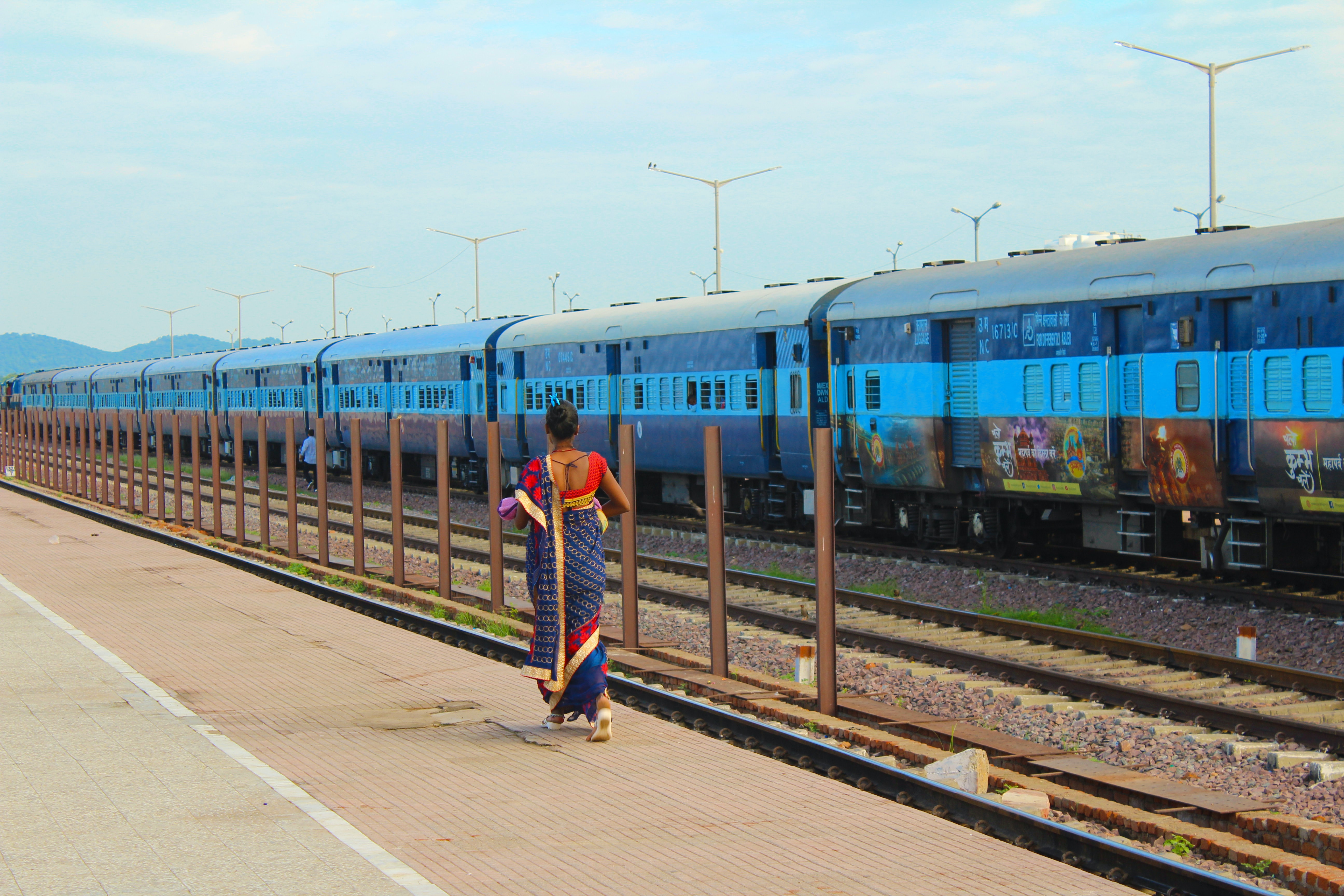How Kochi aims to transform the walking experience of more than 10 000 users along the Green Mobility corridor

As the economic capital of Kerala state in India, the metropolitan agglomeration of Kochi is home to approximately 2.2 million urban dwellers out of which 640,000 inhabitants are located in the core city. As mobility demand continues to rise, the city plans to restructure its urban mobility with support from AFD and the European Union. In addition to the construction of a light metro, Kochi is also tackling non-motorised modes, which account for 15% of all trips. The preparation of a Mobility Improvement Plan along the North-South Railway Station corridor also referred to as the Green Mobility corridor, is one of the major outcomes of this endeavour.
Moving along an active railway - an uncomfortable and dangerous route
The corridor that was considered for mobility improvement is the shortest connection (2.5 km length) between the Ernakulam North and Ernakulam South railway stations. No continuous road exists along the corridor and the area is dominated by difficult accessibility, uneven paths and lack of lighting at night. Despite these conditions, the four mobility surveys that were conducted in February 2020 as part of the diagnosis phase of the study indicated that almost 15,000 people travel along the corridor every day, including:
- 10,000 pedestrians that either walk along and on the tracks due to the difficult walking conditions (60%) or cross the tracks (40%)
- 3,000 autorickshaw users that use complex and congested routes parallel to the corridor, transporting 8,000 people
- 400 cyclists that use the parts of the corridor that are accessible to them
The diagnosis of the current situation along the corridor indicated the need to improve the connectivity between the railway stations as well as with the city centre and the surrounding areas as part of the inclusion of the area into the urban space of Kochi. The currently unsafe and unattractive conditions further accentuated the need for improved urban management.
Ensuring safe and comfortable movement along the railway - design and planning principles of the Green Mobility corridor
Based on the analysis of the current conditions and taking into account the results of surveys with current users of the corridor, the plan for the Green Mobility corridor consists of four main components:
- The development of a green corridor adapted to non-motorised transport (mainly focused on pedestrians and cyclists)
- The development of e-rickshaw services on a separate line to provide a fast and environmentally friendly alternative to the current autorickshaws
- Development of hubs and connections to the city centre at core intersections like the KSRTC Bus Terminal to foster intermodal connections and create public spaces
- Development of social and commercial activities to increase the attractiveness of the corridor
The design principles for the proposed project mainly focused on increasing the amenity and accessibility of the area for non-motorised transport modes through the levelling of the ground and the development of pathways of 3 - 4.5 m that allow for a safe passage of cyclists and passengers in the existing right of way. As part of the aim to increase the security of users, the implementation of fences and hedges to create separation to the railway tracks was included in the plan. An illumination concept will further ensure safe and attractive use during the night and can also support the beautification of the corridor. Efforts to integrate existing trees into the new design are planned to further enhance the attractiveness and comfort of walking and cycling on the route.
On the walkway towards implementation
In this preliminary stage of the project, the implementation costs were estimated at 250 million INR, approximately 3.31 mill US$, excluding land acquisition. The estimated user frequency of the corridor and the associated benefits in terms of emission reduction and increase in social and economic activities include:
- Increase of pedestrians and cyclists by 50% (including transfer from autorickshaws, motorcycles and car users)
- Emission reduction potential of 84t CO2/year based on a transfer of 2,400 vehicle-km/day to green modes on the corridor
- Considerable improvements in safety (prevent people from walking on the railway tracks)
- Attractive public space for the 30,000 people who live, work or study around the corridor.
The Mobility Improvement study suggests that the project could be implemented in the short term, and first steps have already been taken by the municipality in this regard. The project was reviewed and updated by the technical department of the Kochi Municipal Corporation and a preliminary assessment of the land ownership was made to elaborate the feasibility. Even though the Covid-19 pandemic and change of municipal government delayed the progress of the project, the project report has been presented and approved by the Municipal Council to begin the Detailed Project Report process for further implementation.
The case of the Green Mobility corridor in Kochi was also introduced in our session ‘Reflecting about barriers and co-creating solutions for active and walkable cities’ as part of the Mastering Mobility series. Watch it here. The executive summary of the Mobility Improvement study is available here.